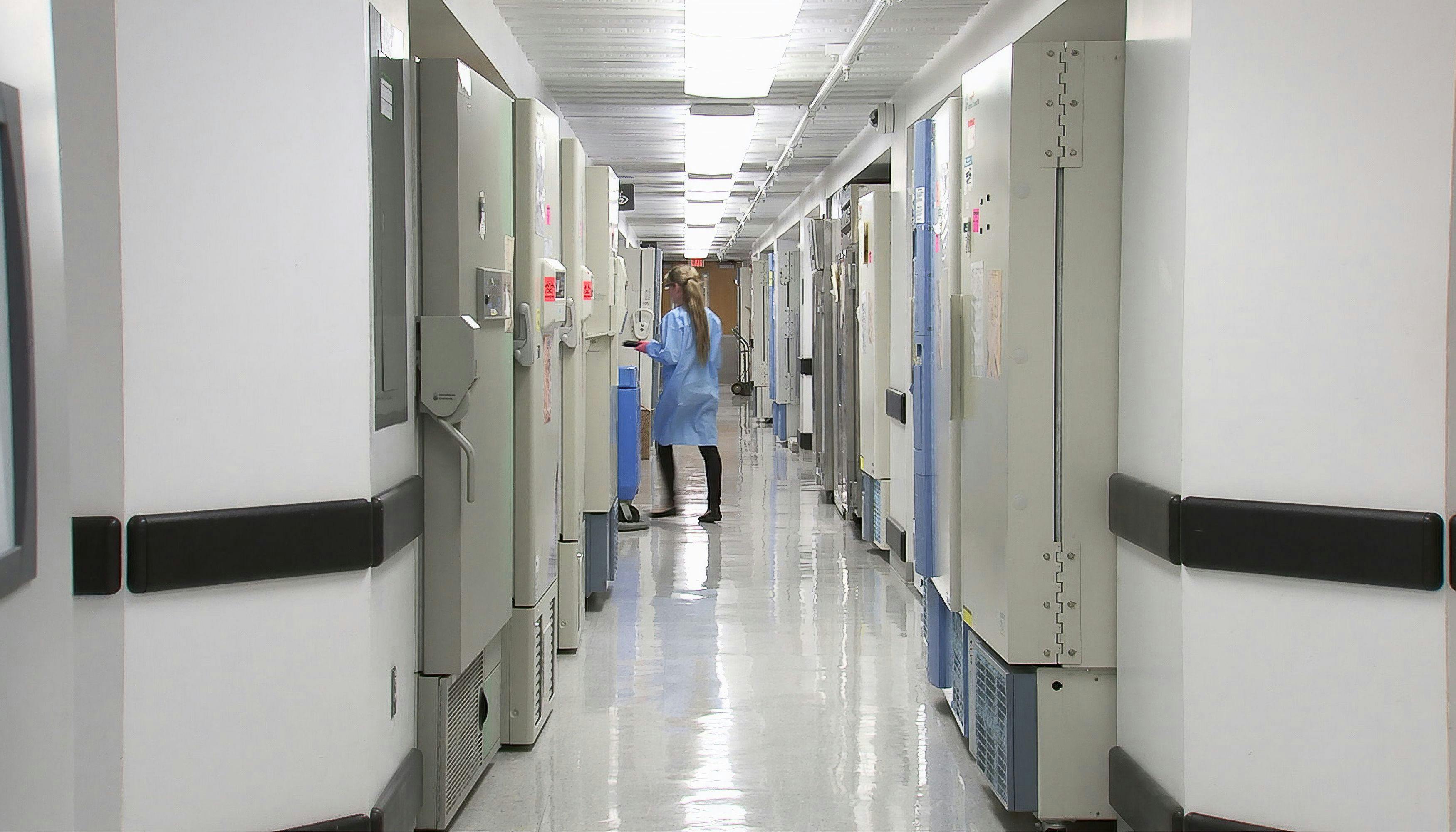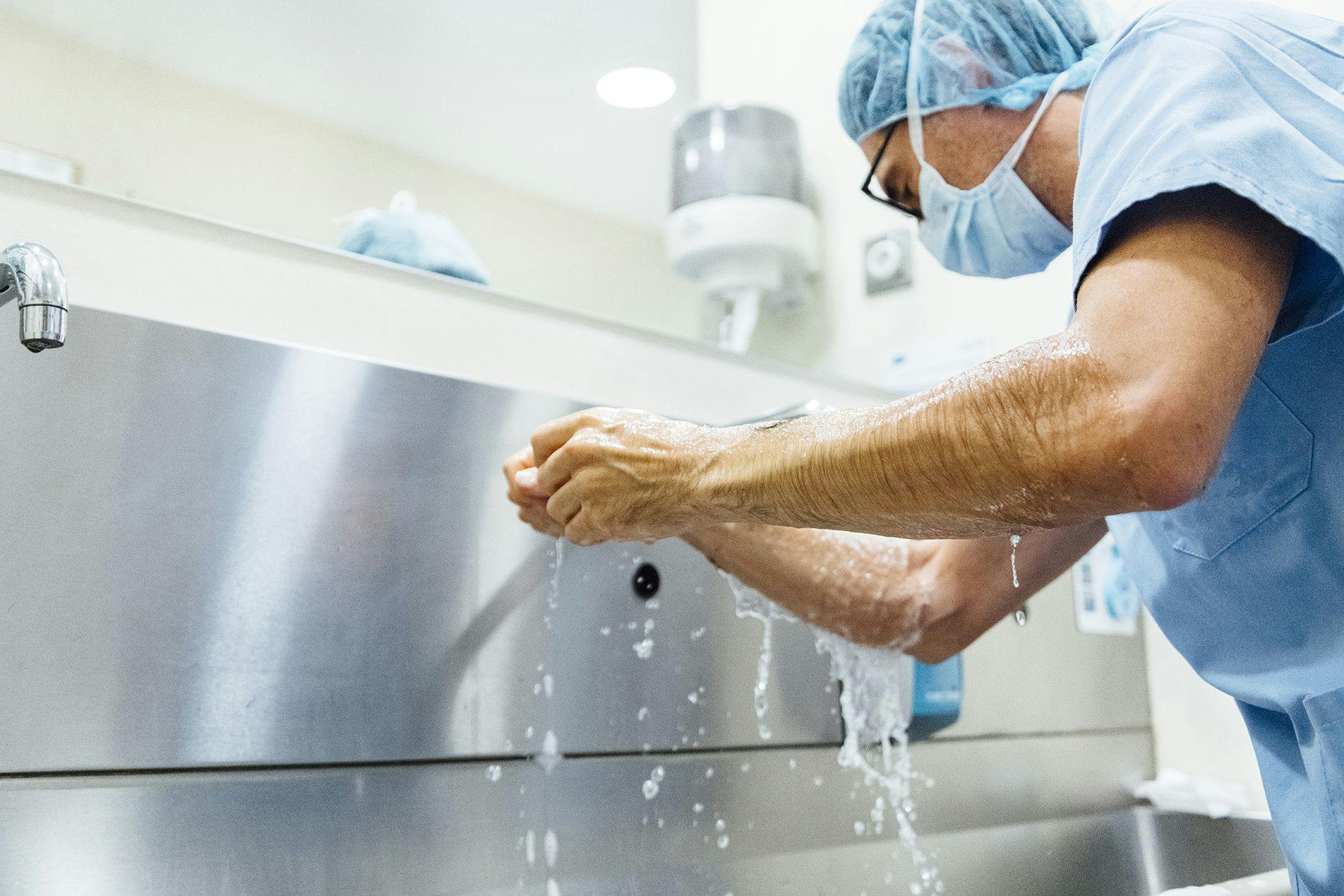Within a hospital, cleanliness and infection control are two of the most important concerns for clinical staff and patients alike. As one of the most utilised areas of any building, washrooms must be designed with their usage environment in mind, especially in a hospital setting.
Hospitals have several different types of requirements when it comes to washrooms, since a waiting room is different to an operating room, as just one example. Therefore, when redesigning a washroom or building one from scratch, regulations need to be followed to help keep everyone safe.
Here is an overview of the different washroom categories to guide any building managers, facilities managers or developers who are looking to create washroom facilities within a hospital setting.

Clinical dry
Clinical dry includes single-bed and multi-bed wards, consulting rooms and other clean utility spaces.
Regular hand-washing will take place in clinical dry settings such as between seeing patients or following patient exams. Therefore, hand washbasins need to be of clinical grade and the waste outlet should be positioned at the back of the basin bowl. All taps must also be operated by elbows, which reduces the chance of spreading an infection to other surfaces within the room or hospital itself.
There is also a need to keep surfaces sanitised, and an IPS duct for waste and service pipes can assist with this. Washbasins may also have an antibacterial glaze to inhibit bacterial growth, in addition to having a design that reduces splashback.
Clinical wet
Clinical wet areas of a hospital include the likes of patient shower rooms and assisted washrooms. In addition, areas that are classed as dirty utility which means they are used for the cleaning or holding of equipment, disposal of clinical waste or patient specimens.
Such areas will require a clinical waste sink with the same rear outlet as found in clinical dry settings, along with what’s known as a sluice sink which is made from stainless steel.
For any washrooms within a clinical wet setting, specifications exist around the size and spacing of the room in order to accommodate disabled patrons. The design of the space must also minimise surfaces, grooves or joints to allow for easy cleaning.
Clinical specialist
Clinical specialist areas refer to theatre suites, which naturally require the highest level of infection control anywhere in the hospital. In clinical specialist areas, clinicians use a stainless steel trough to thoroughly disinfect their arms from the elbow down.
The physical touching of the tap is also to be avoided, and while taps that can be turned on and off with elbows can be used, motion sensor technology is becoming increasingly popular. Ideally, any motion sensor technology should have a function that allows for the water pressure and flow duration to be adjusted, according to the needs of the clinicians.
Plaster casts may also be applied within the theatre, and these require a different type of sink to prevent the plaster itself from blocking the drains. So-called ‘plaster sinks’ are built with a sieving mechanism for this reason.
Non-Clinical wet
Non-clinical areas are areas that are likely to be used by patients or visitors unaided, such as toilets, shower rooms and en-suites.
Much of the criteria that apply to clinical wet areas is a requirement with non-clinical wet. However, a key difference is that the room needs to be designed with different mobility or impairment considerations in mind, such as for patients who are post-operative or have visual impairments.
Therefore, grab rails and motion sensor technology is required to accommodate for the different needs of visitors, patients and outpatients.
Non-Clinical dry
Hospitals have a large number of supporting rooms such as offices and storerooms, which come under the category of non-clinical dry.
While such areas do not have an immediate clinical need for hygiene, they should still be built with infection control in mind as a workplace. The contents of a non-clinical dry washroom can follow that of a standard washroom, though non-slip flooring must be used.
Hospital managers are advised to install motion sensor technology in non-clinical dry areas, particularly regarding taps, light switches, toilet flushers and hand driers as this will help reduce the spread of bacteria.

Hospital Washroom Installation UK
Every hospital washroom has a requirement to install the correct fixtures and fittings to protect patients, staff and visitors. However, the exact products or specifications required will differ depending on the environment type.
The best way for us to help select the most appropriate materials for your building environment and the project budget is to get in touch. From there, we can give you tailored advice so that you can maximise the outcome of your hospital washroom project.
Why not download our brochure to get some ideas of what we can do for you? Browse our full range of colours and materials to help bring your washroom project to life!
If you’re ready to book in with us, or if you need any further advice on anything we’ve mentioned above, please give us a call on 0115 811 4242 or drop us an email and our friendly team will be in touch.

